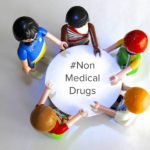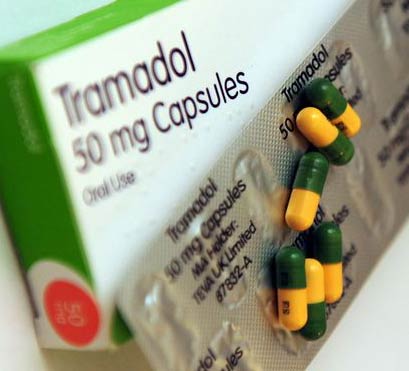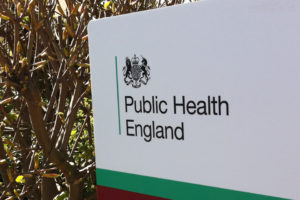
Drugs can soothe people’s lives and that is why so many turn to them when things are going badly, going well or just to change the way they experience life. But things can go wrong and although we think of drugs like cocaine or heroin as the culprits, another group of drugs can cause problems, prescription drugs.
Increasing numbers of people are obtaining and using prescription drugs without medical supervision or in ways not intended by the prescriber. These include medication used to treat pain, anxiety, depression and sleep problems. Examples include Tramadol, Codeine, Diazepam and Gabapentin.

Prescription medication such as Tramadol, Codeine, Diazepam and Gabapentin is often misused.
Misuse of prescription drugs: a hidden problem?
Of course some people will use both illicit and prescription drugs. Either way the nature of using these drugs means it is often covert, making it difficult for researchers to quantify use that is often hidden even from family and friends. One recent pan-European study suggested that the United Kingdom has one of the highest levels of non-medical use of prescription drugs in Europe (Novak et al, 2016).
The internet has provided many people with information about prescription drugs and made access to them easier (Orsolini et al, 2015), including through the dark web and online pharmacies on the surface web (Mounteney et al, 2016). Other ways people obtain these drugs is via friends and family. But some will have been introduced to these drugs via their doctor following surgery or other health problems.
We know that some doctors are reluctant to talk to patients about reducing their use of prescription drugs, even if they know there is no longer a medical reason for continued use. For those patients that have their prescriptions stopped, this can trigger alternative ways of sourcing the drug so they can continue using, either to avoid withdrawal symptoms as a result of developing a dependency on them or to continue the benefits they experience by using.

Some doctors are reluctant to talk to patients about reducing their use of prescription drugs, even if they know there is no longer a medical reason for continued use.
Combining drugs leads to greater health problems
People will have a preference for a particular drug or group of drugs such as benzodiazepines. But many will use more than one drug, increasing the risk of health problems. For some this will prove fatal, as the record number of deaths in the UK last year shows (Hamilton & Sumnall, 2017). Many of these deaths were due to combining opiates and benzodiazepines, which increase the risk of respiratory failure. Combining alcohol with these drugs adds to the risks of overdose, beyond this alcohol also impairs judgement, leading an individual to use more of a drug than they normally would or in circumstances that they wouldn’t normally, such as caring for children or driving.
Poor sleep and pain are common reasons for using drugs, paradoxically both problems can be exacerbated by the very drugs that people use to try and find a solution (Lydon-Staley et al, 2017).
Significant regional variations in prescribing of opioids reveals a North / South divide. A recent retrospective observational study found that areas of greater social deprivation in the North of England had higher rates of opioid prescribing (Mordecai et al, 2018). Several factors might explain this pattern including a greater number of people from lower socio-economic groups having chronic pain, but there could be other explanations, such as unemployment, poor access to specialist pain clinics or social reasons still to be determined.
Public Health England is so concerned about the problem and the numbers of people effected that it has launched a review, which includes benzodiazepines, Z-drugs, GABA-ergic medicines, opioid pain medications and antidepressants. This should go some way in quantifying the scale of use and provide information on which drugs are causing problems. The review will make recommendations for how problems can be prevented and what type of treatment should be offered when problems develop.

The Public Health England review was launched on 24 January 2018 and is due to report in early 2019.
#NonMedicalDrugs conference – York, 16th March 2018
We are organising a one-day event in York that will be an opportunity to share knowledge and experience of this issue.
Cathryn Kemp will share her personal experience, while Harry Sumnall and Adam Winstock will share their expert knowledge and Graham Parsons and Paul Hayes will provide views from specialist treatment. The event will also mark the official launch of the Opioid Painkiller Dependence Alliance and Martin Johnson will explain more about this new organisation and its goals.
Please follow the event on twitter via the hashtag #NonMedicalDrugs and get involved, we need to hear from you with your questions, thoughts and experiences. Vanessa Garrity and André Tomlin will be taking the event #BeyondTheRoom so look out for lots of live tweeting, podcasting and streaming throughout the day.

Join the #NonMedicalDrugs conversation on Twitter (10am-3pm GMT) on Friday 16th March.
Links
Novak SP, Håkansson A, Martinez-Raga J, Reimer J, Krotki K, Varughese S. (2016) Nonmedical use of prescription drugs in the European Union. BMC Psychiatry. 2016 Aug 4;16:274. doi: 10.1186/s12888-016-0909-3.
, , , , and (2015) Profiling online recreational/prescription drugs’ customers and overview of drug vending virtual marketplaces. Hum. Psychopharmacol Clin Exp, 30, 302–318. doi: 10.1002/hup.2466.
Mounteney, J., Oteo, A. and Griffiths, P. (2016), ‘The internet and drug markets: shining a light on these complex and dynamic systems’ (PDF), The internet and drug markets (European Monitoring Centre for Drugs and Drug Addiction: Insights 21), Publications Office of the European Union, Luxembourg.
Hamilton I, Sumnall H. (2017) Drug related deaths are at their highest level in 25 years – here’s why. The Conversation, 2 Aug 2017.
Lydon-Staley DM, Harrington Cleveland H, Huhn AS, Cleveland MJ, Harris J, Stankoski D, Deneke E, Meyer RE, Bunce SC. (2017). Daily sleep quality affects drug craving, partially through indirect associations with positive affect, in patients in treatment for nonmedical use of prescription drugs. Addictive Behaviors, Volume 65, 275-282. https://doi.org/10.1016/j.addbeh.2016.08.026.
Mordecai L, Reynolds C, Donaldson LJ, C de C Williams A. (2018) Patterns of regional variation of opioid prescribing in primary care in England: a retrospective observational study. Br J Gen Pract 2018; 68 (668): e225-e233. DOI: https://doi.org/10.3399/bjgp18X695057
Prescribed medicines that may cause dependence or withdrawal. Public Health England news, 31 Jan 2018.
Photo credits
Photo by Jamie Street on Unsplash
